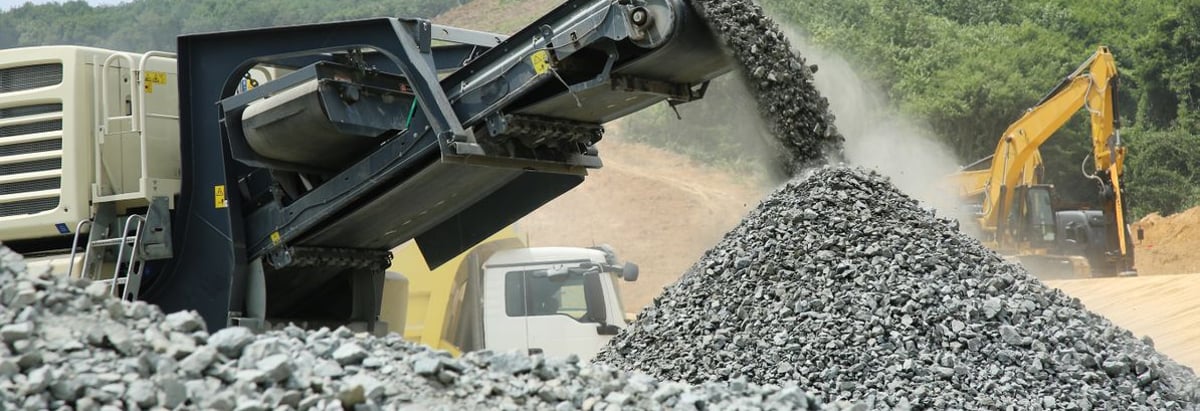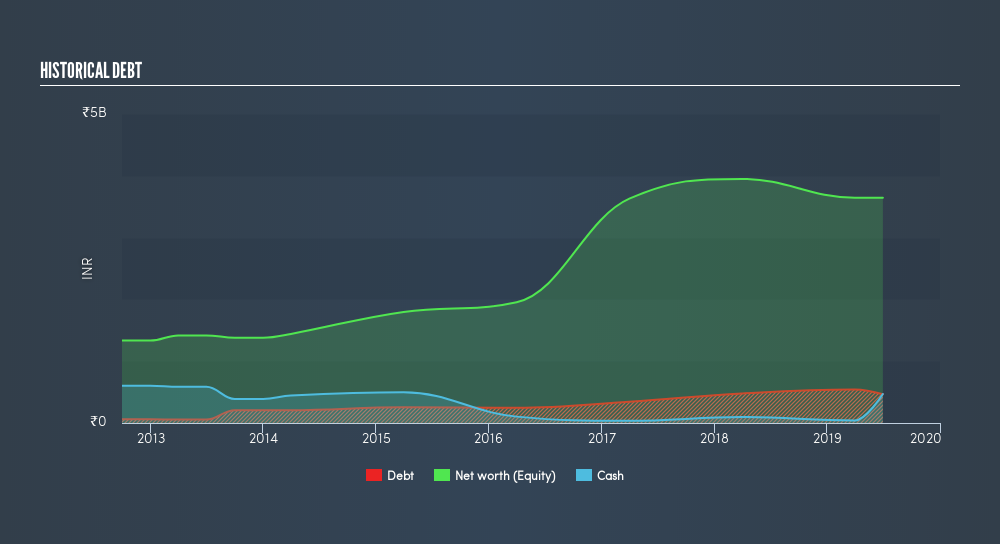
Legendary fund manager Li Lu (who Charlie Munger backed) once said, 'The biggest investment risk is not the volatility of prices, but whether you will suffer a permanent loss of capital.' So it seems the smart money knows that debt - which is usually involved in bankruptcies - is a very important factor, when you assess how risky a company is. Importantly, Gujarat Sidhee Cement Limited (NSE:GSCLCEMENT) does carry debt. But the more important question is: how much risk is that debt creating?
When Is Debt A Problem?
Debt assists a business until the business has trouble paying it off, either with new capital or with free cash flow. In the worst case scenario, a company can go bankrupt if it cannot pay its creditors. However, a more usual (but still expensive) situation is where a company must dilute shareholders at a cheap share price simply to get debt under control. Having said that, the most common situation is where a company manages its debt reasonably well - and to its own advantage. When we examine debt levels, we first consider both cash and debt levels, together.
See our latest analysis for Gujarat Sidhee Cement
How Much Debt Does Gujarat Sidhee Cement Carry?
As you can see below, Gujarat Sidhee Cement had ₹466.3m of debt, at March 2019, which is about the same the year before. You can click the chart for greater detail. However, it does have ₹468.9m in cash offsetting this, leading to net cash of ₹2.61m.

How Healthy Is Gujarat Sidhee Cement's Balance Sheet?
We can see from the most recent balance sheet that Gujarat Sidhee Cement had liabilities of ₹1.84b falling due within a year, and liabilities of ₹715.5m due beyond that. On the other hand, it had cash of ₹468.9m and ₹156.9m worth of receivables due within a year. So its liabilities outweigh the sum of its cash and (near-term) receivables by ₹1.93b.
Given this deficit is actually higher than the company's market capitalization of ₹1.59b, we think shareholders really should watch Gujarat Sidhee Cement's debt levels, like a parent watching their child ride a bike for the first time. In the scenario where the company had to clean up its balance sheet quickly, it seems likely shareholders would suffer extensive dilution. Gujarat Sidhee Cement boasts net cash, so it's fair to say it does not have a heavy debt load, even if it does have very significant liabilities, in total.
Shareholders should be aware that Gujarat Sidhee Cement's EBIT was down 53% last year. If that earnings trend continues then paying off its debt will be about as easy as herding cats on to a roller coaster. There's no doubt that we learn most about debt from the balance sheet. But it is Gujarat Sidhee Cement's earnings that will influence how the balance sheet holds up in the future. So if you're keen to discover more about its earnings, it might be worth checking out this graph of its long term earnings trend.
Finally, a business needs free cash flow to pay off debt; accounting profits just don't cut it. Gujarat Sidhee Cement may have net cash on the balance sheet, but it is still interesting to look at how well the business converts its earnings before interest and tax (EBIT) to free cash flow, because that will influence both its need for, and its capacity to manage debt. During the last two years, Gujarat Sidhee Cement burned a lot of cash. While investors are no doubt expecting a reversal of that situation in due course, it clearly does mean its use of debt is more risky.
Summing up
Although Gujarat Sidhee Cement's balance sheet isn't particularly strong, due to the total liabilities, it is clearly positive to see that it has net cash of ₹2.6m. However, we do find both Gujarat Sidhee Cement's EBIT growth rate and its conversion of EBIT to free cash flow troubling. So despite the cash, we do think it carries some risks. Over time, share prices tend to follow earnings per share, so if you're interested in Gujarat Sidhee Cement, you may well want to click here to check an interactive graph of its earnings per share history.
At the end of the day, it's often better to focus on companies that are free from net debt. You can access our special list of such companies (all with a track record of profit growth). It's free.
We aim to bring you long-term focused research analysis driven by fundamental data. Note that our analysis may not factor in the latest price-sensitive company announcements or qualitative material.
If you spot an error that warrants correction, please contact the editor at editorial-team@simplywallst.com. This article by Simply Wall St is general in nature. It does not constitute a recommendation to buy or sell any stock, and does not take account of your objectives, or your financial situation. Simply Wall St has no position in the stocks mentioned. Thank you for reading.
About NSEI:GSCLCEMENT
Gujarat Sidhee Cement
Gujarat Sidhee Cement Limited manufactures and sells cement and clinker in India.
Adequate balance sheet and slightly overvalued.

